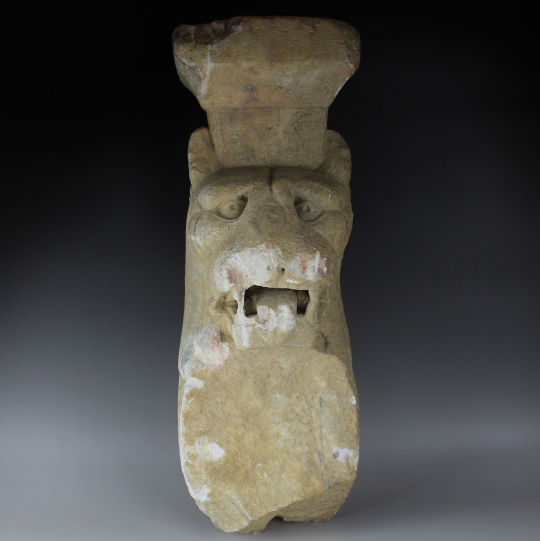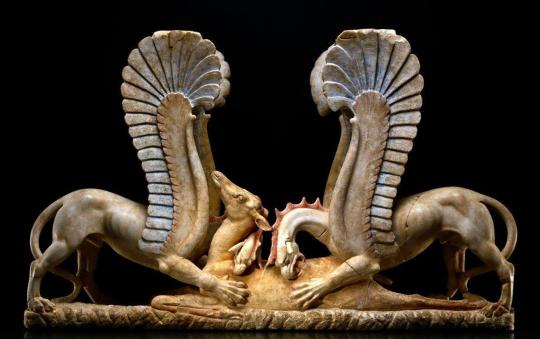#trapezophorum
Text
Roman trapezophorum (table leg) with the head of a panther

ITEM
Trapezophorum (table leg) with the head of a panther
MATERIAL
Marble
CULTURE
Roman
PERIOD
2nd - 3rd Century A.D
DIMENSIONS
492 mm x 170 mm x 200 mm
CONDITION
Good condition
PROVENANCE
Ex German private collection, H. W., Nordrhein-Westfalen, acquired before 1980
Trapezophoron, the Greek term (from τράπεζα, table, and φέρειν, to bear) given to the leg or pedestal of a small side table, generally in marble, and carved with winged lions or griffins set back to back, each with a single leg, which formed the support of the pedestal on either side. In Pompeii there was a fine example in the house of Cornelius Rufus, which stood behind the impluvium. These side tables were known as mensae vasariae and were used for the display of vases and lamps. Sometimes they were supported on four legs, the example at Pompeii (of which the museums at Naples and Rome contain many varieties) had two supports only, one at each end of the table. The term is also applied to a single leg with lion's head, breast and forepaws, which formed the front support of a throne or chair.
Read the full article
#ancient#ancientart#ancienthistory#antiquity#artefact#artifact#ancientartifacts#antiquities#art#artobject#ancientrome#ancientworld#history#classical#archaeology#roman#trapezophorum#table#panther#marble#head
0 notes
Photo

MWW Artwork of the Day (8/19/20)
Hellenistic Greece (323-146 BCE)
Table pedestal (Trapezophoros) with two griffins devouring a deer (4th c. BCE)
Polychrome marble carving, 37 3/8 x 58 1/4 in.
Polo Museale, Ascoli Satriano (Italy)
This specimin, which was unearthed from a high society grave, is considered as a masterpiece with no pre-existing equals.
A trapezophore, trapezophorum or trapezophoron is the leg or pedestal of a small side table, generally in marble, and carved with winged lions or griffins set back to back, each with a single leg, which formed the support of the pedestal on either side. In Pompeii there was a fine example in the house of Cornelius Rufus, which stood behind the impluvium. These side tables were known as mensae vasariae and were used for the display of vases, lamps, and such. Sometimes they were supported on four legs, the example at Pompeii (of which the museums at Naples and Rome contain many varieties) had two supports only, one at each end of the table. The term is also applied to a single leg with lion's head, breast and forepaws, which formed the front support of a throne or chair. (Wikipedia extract)
1 note
·
View note